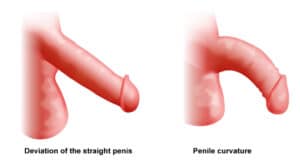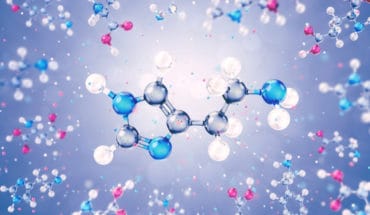Understanding the Causes and Treatments of PD and ED: Sexual issues are nothing new. History suggests that even hundreds of years ago, men suffered from these kinds of intractable issues. But in modern time sexual conditions have become more commonplace compared to before.
Among all the sexual conditions, Peyronie’s disease and Erectile Dysfunction are two of the most well-known, that men are subjugated too. A man who has Erectile Dysfunction or ED can’t achieve strong erection for satisfactory sexual activity. On the other hand, Peyronie’s disease or PD is a condition which makes an erected penis curve or bend unnaturally. Between these issues, ED is definitely more common in men. In this article, we will discuss the potential causes of ED and PD in men. We will also take a look at some of the possible treatments for these sexual issues.
Causes of Erectile Dysfunction (ED):
What causes Erectile Dysfunction in men? Well, men can suffer from ED due to both physical and psychological causes. Understanding these underlying factors is crucial for effective diagnosis and treatment.
Physical Causes:
1. Cardiovascular Conditions: Conditions such as high blood pressure, atherosclerosis (hardening of the arteries), and heart disease can restrict blood flow to the penis, making it difficult to achieve or sustain an erection.
2. Diabetes: High blood sugar levels can damage the blood vessels and nerves that play a vital role in erections.
3. Hormonal Imbalances: An imbalance in testosterone and other hormones can affect sexual function.
4. Neurological Conditions: Conditions such as multiple sclerosis, Parkinson’s disease, and spinal cord injuries can interfere with nerve signals required for erections.
5. Medications: Certain medications, including antidepressants, antihistamines, and blood pressure drugs, may have side effects that contribute to ED.
6. Lifestyle Factors: Obesity, smoking, excessive alcohol consumption, and substance abuse can all increase the risk of developing ED.
Psychological Causes:
1. Stress and Anxiety: High levels of stress, anxiety, or depression can interfere with sexual arousal and performance.
2. Relationship Issues: Troubled relationships, communication problems, or unresolved conflicts can contribute to ED.
3. Performance Anxiety: Fear of not satisfying a partner or performing sexually can lead to temporary or chronic ED.
Causes of Peyronie’s Disease:
It’s very important to understand what causes PD in a man. To be fair, there is no exact singular factor that can cause Peyronie’s disease in men. Peyronie’s Disease is believed to be caused by a combination of genetic predisposition and trauma to the penis. Though the exact mechanisms behind its development are not fully understood, this condition is usually characterized by the formation of fibrous scar tissue, known as plaques, within the penile tissue. This scarring leads to curvature, pain, and other complications during erections. Trauma to the penis, such as a bending or stretching injury, can trigger the formation of scar tissue. Additionally, genetic factors and certain connective tissue disorders may contribute to the development of PD for men.

Treatment Options for Erectile Dysfunction (ED):
The Erectile Dysfunction treatment options depends on its underlying cause and individual circumstances. Here are some common treatment options:
Lifestyle Modifications:
1. Healthy Lifestyle: Adopting a healthy diet, regular exercise, and weight management can improve overall cardiovascular health and contribute to better sexual function.
2. Smoking Cessation: Quitting smoking can improve blood flow and reduce the risk of ED, as smoking and ED have an association.
3. Limit Alcohol Consumption: Excessive alcohol intake can impair sexual function, so moderation is key.
Psychological Counselling:
Counselling or therapy sessions can help address underlying psychological issues contributing to ED, such as stress, anxiety, or relationship problems.
Medications and surgery:
1. Oral Medications: Drugs like Viagra (sildenafil), Cialis (tadalafil), and Levitra (vardenafil) work by enhancing blood flow to the penis, aiding in achieving and maintaining an erection.
2. Other Medications: Depending on the underlying cause, other medications targeting specific conditions such as hormonal imbalances or underlying diseases may be prescribed.
3. Penile Implants: Surgery might be necessary to treat ED in some circumstances. For instance, surgically implanted penile implants can aid in erection creation. The two primary varieties of penile implants are bendable or malleable and inflatable. Inflatable implants have cylinders inside the penis that can be filled with liquid to produce an erection. On the other hand, malleable implants are rods that are implanted inside the penis and can be twisted into place to produce an erection.
Non-invasive options:
1. Vacuum Erection Devices: Vacuum erection devices (VEDs) are non-invasive devices that pull blood into the penis to assist in Erectile Dysfunction. Vacuum pumps for Erectile Dysfunction are made up of a vacuum-producing pump and a cylinder that is put over the penis. An erection is brought on as a result of blood being pulled into the penis. A constriction ring is put around the base of the penis once an erection has been established to keep it.
2. Shockwave therapy: Low-intensity sound waves are used in the non-invasive treatment of Shockwave Therapy for ED to increase blood flow to the penis. The procedure includes applying low-intensity shockwaves to the penis with a handheld device. This promotes the development of new blood vessels and enhances blood flow to the penis. This higher blood flow also results in better erections and general sexual performance. In addition to increasing blood flow, shockwave therapy for ED may help to lessen the buildup of blood vessel plaque and can improve Erectile Dysfunction in men. Shockwaves may support the creation of new tissue in the penis as well in addition to encouraging the release of growth factors.
3. EMTT: EMTT therapy or extracorporeal magnetotransduction therapy was originally developed in order to treat musculoskeletal pain. But recent studies have shown that EMTT therapy works great in treating ED in men when this treatment is used in conjunction with other modern technologies such as shockwave therapy and Tesla Chair.
4. Tesla Chair: Tesla Chair is a contemporary treatment option for ED. This treatment option uses functional magnetic stimulation. In this treatment option the patient sits on the chair while fully clothed and the chair does the rest. The chair delivers a magnetic field which can have the strength up to 1.7 Tesla. It is extremely comfortable to use and practically painless. Tesla Chair also works best when used in conjunction with shockwave therapy and EMTT therapy. These non-invasive treatments can treat ED in men very effectively when provided properly.
Treatment Options for Peyronie’s Disease:
Peyronie’s Disease treatments aims to manage symptoms and correct the penile curvature. Treatment options include:
Medications and Non-Surgical Procedures:
1. Collagenase Clostridium Histolyticum (CCH): This injectable medication breaks down the scar tissue, reducing the curvature of the penis.
2. Verapamil or Interferon Injections: These injections may help soften the scar tissue and improve symptoms.
3. Shockwave therapy: Shockwave therapy for Peyronie’s disease uses low-intensity shockwaves to dislodge scar tissue and encourage the development of new blood vessels. This therapy is a novel Peyronie’s disease treatment. Many people find the process to be appealing because it is non-invasive and may be carried out in an outpatient setting. A device that generates low-intensity shockwaves to the penis is often used to administer shockwave therapy. It takes 20 to 30 minutes to finish this painless treatment procedure. In clinical trials, shockwave therapy for Peyronie’s disease has been proven to be successful. According to a research of the Journal of Sexual Medicine, shockwave therapy reduced pain and improved penile curvature in those with Peyronie’s disease. Shockwave therapy enhanced erectile performance and penile curvature in those with Peyronie’s disease, according to another study that was published in the Journal of Endourology.
4. Vacuum therapy: Utilizing a device that provides negative pressure around the penis as part of vacuum therapy is a non-invasive treatment option that may assist to enhance blood flow and encourage the formation of healthy tissue. VED for Peyronie’s disease may be combined with additional therapies such injections or oral drugs for more effectiveness.
Surgery:
1. Nesbit Procedure: This surgical procedure involves removing a small portion of tissue from the side of the penis opposite to the curvature, effectively straightening the erection.
2. Grafting Procedures: In severe cases, following a resection of the plaque, a graft may be used to replace the scarred tissue, restoring normal penile function.
3. Penile Prosthesis Implantation: For individuals with both Peyronie’s Disease and significant ED, penile prosthesis surgery may be recommended. This procedure involves the placement of inflatable devices that allow for controlled erections.
Peyronie’s Disease and ED can have a significant impact on a man’s sex life and general well-being. These issues can harm a person’s mental health as well. But fortunately, nowadays there are a lot of treatments available for these issues. If a sufferer of ED and PD seeks medical attention in right time, then definitely it’s possible to treat these illnesses and experience healthy sex lives yet again.
- Gut microbiome could delay onset of type 1 diabetes - 3rd April 2025
- The da Vinci 5 Robot Is Set To Transform Bariatric Care: - 31st March 2025
- Beyond money: the hidden drivers fuelling child food insecurity - 31st March 2025






